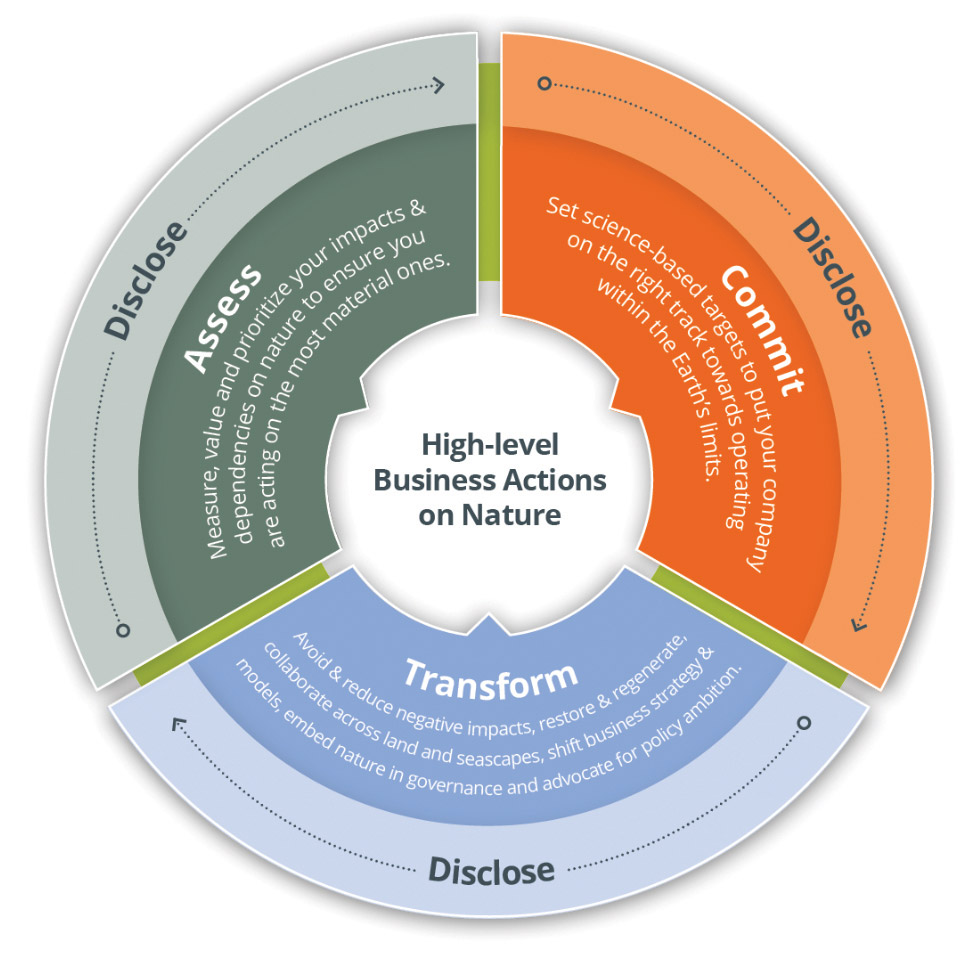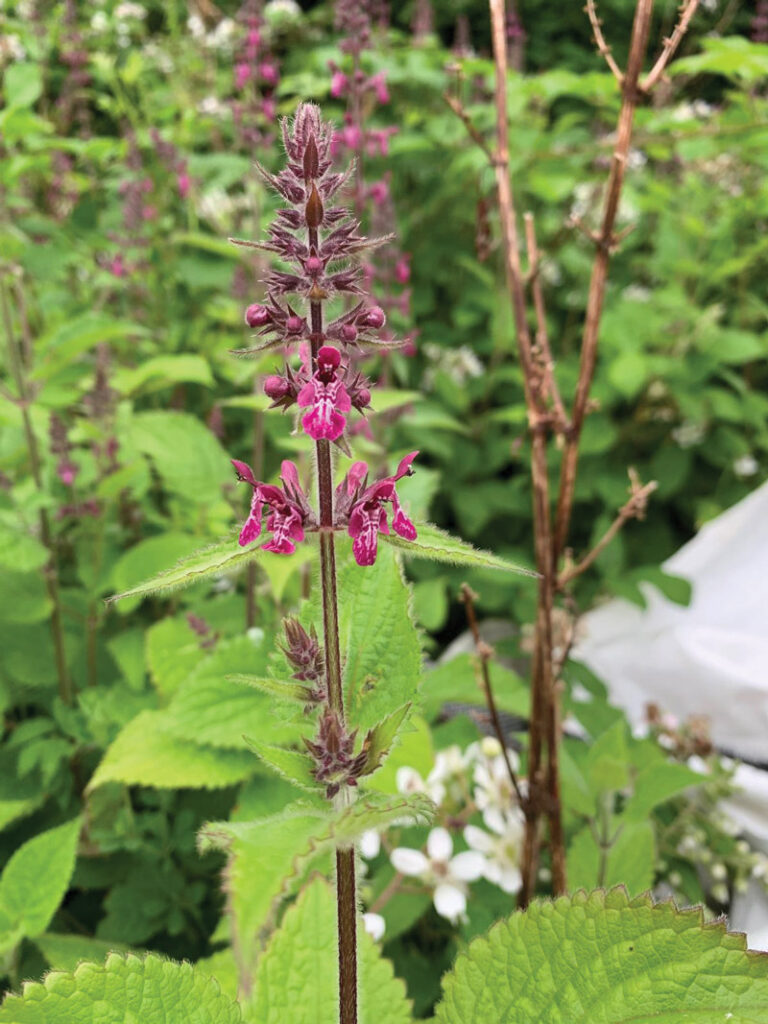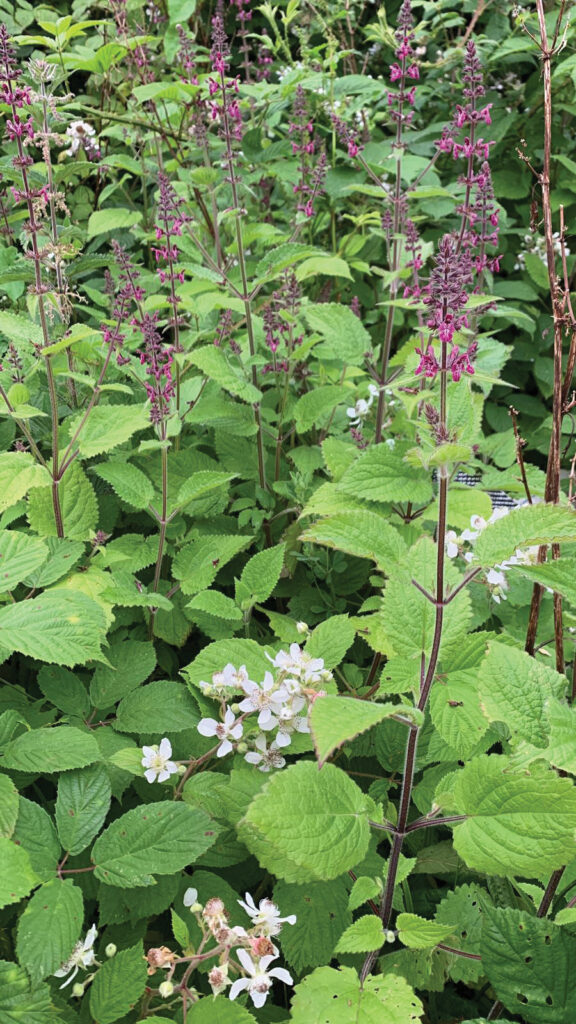In Ireland, as reported in the National Strategy for Horticulture 2023-2027, the amenity horticulture industry (amenity and other non-edible products) was worth approximately €100 million to the Irish economy, with food horticulture valued at approximately €429 million to the economy in 2022. On the flip side, the operations of the horticulture industry can have significant negative impacts on biodiversity nationally and internationally.
Despite globalisation, change needs to start happening at a local and national level. Business for Biodiversity Ireland, a not-for-profit organisation on a mission to get nature into the boardroom, is laying the foundations for systems change within Ireland’s business community.
This article highlights the role the horticulture industry has in relation to biodiversity and biodiversity loss, including the impacts and dependencies this industry has on nature. National and European regulations are highlighted, including the recently introduced EU Corporate Sustainability Reporting Directive (CSRD). In addition, the supports available from Business for Biodiversity Ireland are outlined. We also include a piece from SAP Landscapes on their actions for biodiversity.
WHAT IS BIODIVERSITY AND WHY IS ITS LOSS A PROBLEM?
Biodiversity refers to the variety of all life forms on earth, including humans. The loss of biodiversity is invisible to many. A 2020 report from the UK’s Royal Botanic Gardens, Kew, on the state of the world’s plants reported that almost 40 per cent of the earth’s plant species are threatened with extinction.
Closer to home, the National Biodiversity Action Plan 2023- 2030 sets out the dire state of Ireland’s biodiversity, with 85 per cent of our EU protected habitats having an unfavourable status, and almost half of these continuing to decline. In addition, around a third of our EU protected species have an unfavourable status, and over half of our native plant species are in decline.
We also have a sharp fall in insect species, including our pollinators, with more than half of our native bee species in decline and 30 per cent threatened with extinction nationally. Almost half of bird species worldwide are in decline, with 63 per cent of Ireland’s bird species in trouble, as reported by Birdwatch Ireland.
Biodiversity is declining faster than at any other time in human history. The impact of this decline threatens species (including people), societies and economies. Even with the Irish government’s declaration of a biodiversity emergency in 2019, this crisis is not being treated as an emergency.
Too many statistics and negative information can be overwhelming, hard to digest, and can make many of us want to switch off. But what we really need to do is take a step back and consider our own relationship with nature.
How often do you consider the benefits nature provides to you? These benefits include food, water, medicines, fuels, energy, clean air and water, protection from natural disasters, climate regulation, health and wellbeing, and so much more. We depend on these benefits, or ecosystem services, for our very survival.
What about the benefits your horticulture business gets from nature? Horticulture businesses have a deep connection with nature and depend on healthy soils for plants to grow and thrive. Consider what the horticulture industry does, including amenity horticulture and food horticulture – nurseries growing ornamental and crop plants, aquatics, floristry, design, landscaping, construction, maintenance, importing, sports turf, tree surgery, and more. All of it depends on nature.
WHAT IS DRIVING BIODIVERSITY LOSS?
The five key drivers of biodiversity loss as defined by the Intergovernmental Science-Policy Platform on Biodiversity and Ecosystem Services (IPBES) are invasive species; land and sea use change; direct exploitation of natural resources and organisms; pollution; and climate change.
Businesses put pressure on these drivers and accelerate changes in biodiversity through their impacts and dependencies. The World Economic Forum 2024 Global Risks Report ranks biodiversity loss and ecosystem collapse in the top three global risks over the next ten years, with pollution ranked in the top ten global risks. These risks are a direct threat to our biodiversity and natural capital, and stem largely from our failure to conserve and restore them.
WHY IS BIODIVERSITY IMPORTANT FOR THE HORTICULTURE INDUSTRY?
The horticulture industry depends on biodiversity for ornamental plants, food crops, pollinators, clean water, clean air and growing media, to name a few. Without biodiversity, healthy ecosystems and the services they provide (our natural capital), the horticulture industry would not survive. A 2021 study on the relationship between biodiversity and the economy shows that the economy is embedded in nature, not external to it. We can’t keep taking from nature and not giving back.
From the plant collectors of bygone times (think of the 1630s ‘tulip mania’ and the Victorian fern craze of the 19th century) to the present day, our fascination with plants has not waned. People have gone wild for plants – and often it was all about status and fashion and trying to control nature. There are so many weird, wonderful, colourful, and beautiful plant species to discover, many right on our doorstep – but we need to be mindful of what we plant and grow. Sometimes, a stunning exotic species (think Rhododendron ponticum) belongs in a photograph, not in the Irish landscape.
WHERE DOES HORTICULTURE FIT INTO THE BIODIVERSITY LOSS STORY?
Think of all the ‘stuff’ used for many horticulture businesses to operate. It is not just the obvious items such as plants, growing media and chemical fertilisers and pesticides.
Think of the direct footprint of your business – land use, water use, chemical use, pollution. What impact does this have on biodiversity and our natural capital? We need to think ‘big picture’. Let us consider some of the historical and current ecological impacts of the horticulture industry that link to drivers of biodiversity loss.
INVASIVE SPECIES
Think of the numerous ‘garden escapees’ – alien (non-native) plant species that have become invasive and are seriously impacting Irish landscapes, habitats and ecosystems, both on land (including Rhododendron ponticum and cherry laurel), and in our water bodies; often from dumping of garden pond aquatic oxygenating species that were far too happy in their small garden ponds, such as curly waterweed and NZ pigmyweed – neither of which are for sale in Irish garden centres anymore, thankfully.
The impact of invasive species is evident throughout the country. Think of ash dieback – first identified in Ireland in 2012 in Co Leitrim, having come in on a consignment of ash trees imported from Europe – and the devastation it has caused to our biodiversity and landscape, and the impact it has had on hurley making. Of great risk to the viability of oak trees due to potentially severe defoliation, the oak processionary moth’s caterpillars were first recorded in Ireland in June 2020 in a park in Dublin, having found its way to Ireland on oak trees imported from Europe.
Another bully in the wild is the dreaded Japanese knotweed, introduced to Ireland as an ornamental plant in the 19th century, and its close relative, the Russian vine (the common name, mile-a-minute, is a dead giveaway). More recently, the use of seed bombs and so-called ‘wild’ seed mixes have introduced many non-native plant species to our landscape, some of which could cause havoc in the wild. Most of these seed mixes do not contain native Irish seeds.
Our climate is changing. This will impact what we can grow and also what may become invasive. A recent article in The Guardian (11 June 2024) showed the shocking damage to property in the UK due to a bamboo species (Phyllostachys sp.) which was typically a clump-forming species, but is now becoming a runner in response to our changing climate. This bamboo is considered as bad as Japanese knotweed in the UK.
A recently published guide to Ireland’s regulated invasive alien plant species is a useful resource for landscapers, growers, and retailers. (https://shop.biodiversityireland.ie/ products/irelands-regulated-invasive-alien-plant-species).
POLLUTION
Pollution includes plastics in pots and packaging and astroturf. Consider the green waste that is produced and disposed of, including disposal of invasive species material.
Pollution from pest control practices can impact our biodiversity. Consider the impact pesticides and other chemicals can have on our pollinators and other invertebrates, and also the negative impact on soil health. The National Horticulture Strategy reported that there has been widespread adoption of IPM (integrated pest management) practices, which is very encouraging.
LAND USE CHANGE
Think of the impact from land use change, whether that be nurseries, large developments, gardens, parks, golf greens or football pitches. Any change in land use for horticulture will impact biodiversity; however, once the potential impacts are identified, decisions can be made on how to reduce the impact and protect biodiversity whilst still continuing to do business.
CLIMATE CHANGE
The transition to green energy will be helpful in reducing greenhouse gas emissions from the horticulture industry. Impacts on the industry from climate change and biodiversity loss will be significant. Warmer temperatures and increased risk of drought is a serious concern, whether growing in Ireland or importing from abroad. A warming climate may create the right conditions for certain pests and diseases to survive and thrive. The horticulture industry will have to adapt to these changing conditions by introducing approaches such as water stewardship, encouraging natural pest control through biodiverse landscapes, growing native species, and cultivating drought-resistant plant species.
NATURAL RESOURCE USE
Peat extraction and use has a significant impact on biodiversity and on climate change. Billions of tonnes of carbon dioxide are released to the atmosphere from drained peatlands every year. Our peatlands are crucially important for biodiversity and for sequestering and storing carbon long-term. The world’s peatlands store more than twice as much carbon as all the forests of the world.
When I first started studying horticulture in 2002, trials were already underway at Teagasc to develop alternative growing media to peat. In the 22 years since then, it is disappointing that the reliance on peat for the horticulture industry continues.
There is also the impact on biodiversity from extraction of mineral resources such as lime, grit, vermiculite, perlite, etc. It is important for those in the industry to know where the materials are mined and the potential impact on biodiversity in those locations.
Water is another natural resource that the horticulture industry relies on. Water stewardship must be part of how the horticulture industry operates.
HOW DO EU REGULATIONS AFFECT THE HORTICULTURE INDUSTRY?
There is a lot happening at national and European level around protection of our biodiversity. The adoption of the EU Restoration Law this month is an unprecedented step towards restoring Europe’s degraded ecosystems, particularly ecosystems that can capture and store carbon and can reduce the impact of natural disaster. The adoption of this law is for the benefit of people, the climate and the planet.
One piece of policy that has had a lot of attention is the Corporate Sustainability Reporting Directive (CSRD). CSRD entered into force in January 2023. It requires certain companies to assess and report on their impacts and dependencies on nature. Businesses that come under the scope of CSRD include corporates, large businesses and listed small and medium enterprises (including non-listed micro businesses as well, SMEs are businesses that have fewer than 249 employees). CSRD aligns with global frameworks such as the Global Biodiversity Framework and the UN Sustainable Development Goals (SDGs).
SMEs and micro-enterprises that are non-listed (which accounts for the majority of SMEs in Ireland) are not currently obliged to report under CSRD. Many businesses in the horticulture sector fall into this category and will not currently have to report. However, SMEs are encouraged to prepare reports on a voluntary basis, as they are typically part of the supply chain for larger organisations that may request their suppliers to provide environmental, social and governance (ESG) information. In addition, sustainability information may be requested from banks, investors and other stakeholders.
The recently published National Biodiversity Action Plan 2023-2030 includes actions on supporting businesses and communities and adopts a whole-of-government, whole-of-society approach to biodiversity.
WHERE CAN ORGANISATIONS WITHIN THE HORTICULTURE INDUSTRY GET SUPPORT?
Business for Biodiversity Ireland, established in 2022, is a not-for-profit organisation on a mission to support and empower businesses to take action for biodiversity and to start their journey to ‘nature positive’ ensuring more nature in the world in 2030 than in 2020, and continued recovery after that. The Business for Biodiversity Platform aims to help businesses identify what strategies can be employed to help mitigate nature-related risks, maximise opportunities and integrate nature into their decision making.
One of the main aims of the platform is to encourage and empower businesses to assess their impacts and dependencies on nature, and craft meaningful biodiversity strategies around that information. This multi-stakeholder platform was seed-funded by the Department of Housing, Local Government and Heritage (DHLGH) and the Department of Agriculture, Food and the Marine (DAFM), and is supported by Natural Capital Ireland, the National Biodiversity Data Centre (NBDC) and Business in the Community Ireland (BITCI).
In January 2023, the Business for Biodiversity Platform embarked on a 12-month pilot with six pioneering Irish businesses, to help them get started on their journey to nature positive. This was our first multi-sector community of practice, which included SAP Landscapes along with five other businesses from different sectors.
The first phase of Business for Biodiversity Ireland’s inaugural community of practice in 2023 was the assessment phase of our roadmap to nature positive. This is in alignment with the assessment phase of the ACT-D high level business actions on nature framework that was developed by a number of leading organisations including Business for Nature, World Business Council for Sustainable Development and Capitals Coalition.
Another source of support is from the All-Ireland Pollinator Plan (pollinators.ie), which provides a series of evidence-based actions to improve biodiversity and support pollinators on any site, via local community sponsorship, or through the value chain. Visit pollinators.ie/businesses to download their free guide.
WORKING FOR NATURE, NOT AGAINST IT
There is no escaping the fact that biodiversity loss and climate change will have a significant impact on the horticulture industry, which relies so heavily on nature and on a temperate climate. The biodiversity loss and climate crises are inextricably linked and need to be addressed together.
We all have a role to play in protecting biodiversity. We reap what we sow. We need to understand our relationship with nature and how we are utterly dependent upon biodiversity and ecosystems that are healthy and functioning. We need to value the natural environment.

This is an important opportunity for the horticulture industry to have a real positive impact on Ireland’s wonderful biodiversity. It is also an opportunity to engage with communities and other local businesses. Working together, we can strive for better businesses that work with nature, and not against it.
For more information on Business for Biodiversity Ireland, check out our website at businessforbiodiversity.ie. Thanks to Lucy Gaffney, Business for Biodiversity Ireland, Executive Director; and to Paul Giles, Commercial Director, SAP Landscapes. ✽
 EMER NÍ DHÚILL completed a PhD in the conservation biology of Ireland’s iconic fern species, the Killarney fern. She has a long career as an ecologist surveying both rare and invasive species in Ireland. Emer joined the research team at Natural Capital Ireland in 2021 and is Head of Research for Business for Biodiversity Ireland
EMER NÍ DHÚILL completed a PhD in the conservation biology of Ireland’s iconic fern species, the Killarney fern. She has a long career as an ecologist surveying both rare and invasive species in Ireland. Emer joined the research team at Natural Capital Ireland in 2021 and is Head of Research for Business for Biodiversity Ireland
PIONEERING FOR BIODIVERSITY
Paul Giles, Commercial Director at SAP Landscapes, describes the benefits of Business for Biodiversity Ireland’s multi-sector community of practice
As a commercial landscaping company, SAP Landscapes is dedicated to integrating and maintaining green infrastructure in the built environment. Seeing the opportunity to engage with Business for Biodiversity Ireland, we joined the initiative, with an understanding that while our services offer numerous benefits, they also come with environmental impacts.

We were also aware of the evolving policy and legislative landscape, including the upcoming Corporate Sustainability Reporting Directive (CSRD), and an increasing focus on nature and biodiversity. Given our position within value chains, we recognise the need to be prepared for potential implications and the broader sustainability expectations of our clients and partners.
Our participation with the Business for Biodiversity Platform and the community of practice has highlighted the significance of nature and biodiversity in our operations. This has provided us with a more comprehensive understanding of our activities and has helped us to identify both positive and negative impacts on nature. Although we are still in the early stages of this iterative process, the platform has already helped us assess and identify key areas of focus, and we are working to understand the challenges and next steps beyond our current decarbonisation efforts. Our industry relies heavily on natural resources and healthy biodiversity and ecosystems, and with our hands-on approach, we see both an opportunity and a responsibility to make a positive impact.
One of the most rewarding aspects of the platform has been the engagement with thought leaders and businesses from various sectors, all working to understand the challenges and solutions. This opportunity to learn from the experiences of others and to contribute to the conversation has been invaluable. Given the multiple stakeholders involved in landscape infrastructure projects – from planning and design through to procurement, delivery and ongoing maintenance – it is crucial that our industry continues to engage collectively. By working together with suppliers and clients, we can strengthen collaboration, reduce our impacts, and move towards nature-positive action.


WHAT CAN THE HORTICULTURE INDUSTRY DO FOR BIODIVERSITY?
BY EMER NÍ DHÚILL, BUSINESS FOR BIODIVERSITY IRELAND
Business as usual is not an option. Regardless of current legal obligations, the plight of nature is so great that there is a responsibility for all organisations, no matter their size, to understand their impacts and dependencies on nature and to take measures to halt and reverse their businesses’ negative impacts on nature.
The only future for the horticulture industry is to be sustainable. Following are a number of practical steps for the horticulture industry. (This is by no means an exhaustive list.)
● Understand your own direct impacts on biodiversity from your business activities, inputs, processes and outputs.
● Understand your business and value chain relationships. For upstream activities (indirect impacts), this includes all activities associated with suppliers, as well as transportation of commodities to manufacturing facilities. For downstream activities (indirect impacts) this includes your customers.
● Go native! Grow native and pollinator-friendly plants. But remember that planting for biodiversity is not just about flowering plants for pollinators; don’t forget our wonderful native ferns, grasses and sedges that are an important part of our biodiversity, too; these species will add interest to any garden space. It’s not about banning all non-native plant species – but we need to be very aware of the potential of certain species to become invasive.
● Don’t plant cherry laurel! There are so many native species options for hedging. In my time working as an ecologist, I have witnessed the devastating impact that cherry laurel can have on our woodlands.
● Where you buy matters. Where your plants and growing media are sourced matters. Knowing the provenance of plants and how they were cultivated is vital.
● Biodiversity should be at the heart of the design process. Urban gardens can be amazing habitats, can boost biodiversity, provide food and shelter to wildlife, including pollinators, and can bring joy to those that use the space. If this untapped area was used for biodiversity, the benefits for both people and biodiversity would be immense.
● Avoid installing astroturf in gardens – this plastic grass is a biodiversity desert, and its manufacturing generates pollution that damages our soils and wildlife.
● Education is key – educate your team and customers about the biodiversity crisis and how the horticulture industry has a role in halting biodiversity loss.
● Education and improved awareness around biosecurity is essential.
● Join Business for Biodiversity Ireland and the All-Ireland Pollinator Plan to learn more about actions the horticulture industry can take for biodiversity and nature.




